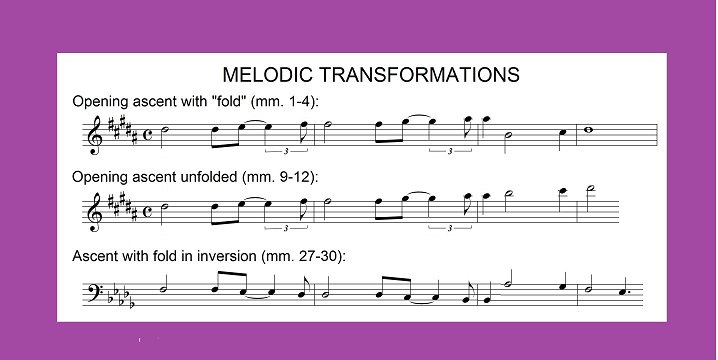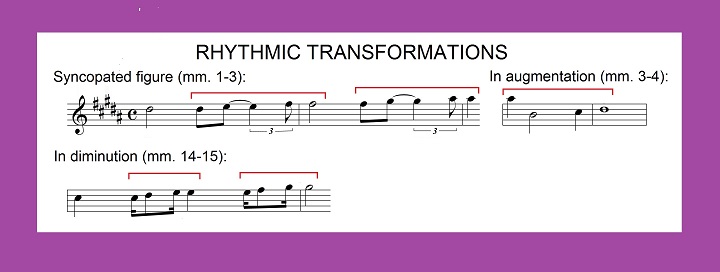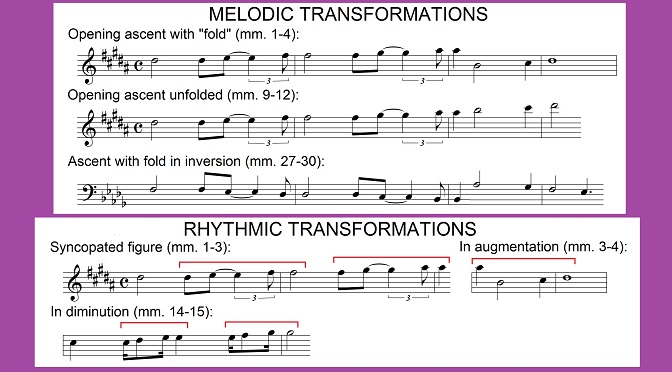Meditation: The Old within the New
The human brain delights in recognizing the familiar in new guises. In music, motives and themes are constantly transformed into new guises by a variety of devices. The main theme of my Meditation opens with a series of ascending steps, except that one of the ascending seconds is converted (remember the octave equivalence principle?) into the downward leap of a seventh, creating a “fold” in the middle of the phrase. This downward leap is developed further in the next two phrases of the piece.

Then, in mm. 9-12, the whole ascent is “unfolded,” so that the melody rises dramatically through a full octave to a new climactic point.
In the contrasting middle section of the piece, marked Più mosso e con passione, you might expect to encounter new thematic material. But a close look at the melody line, presented in the left hand, reveals that it is a transformation of that the opening melody, complete with the fold — except that the whole pattern is now turned upside down. The ascending steps have become descending steps, and the downward seventh leap has become an upward seventh leap. Musicians call this device “inversion,” and regardless of whether we are aware of it consciously or only subliminally, it brings us much the same pleasure we experience in meeting an old friend in an unexpected context.

The familiar-within-the-new principle is also reflected in the piece’s rhythmic transformations. The syncopated rhythmic figure in the opening bars is transformed by both augmentation and diminution.

